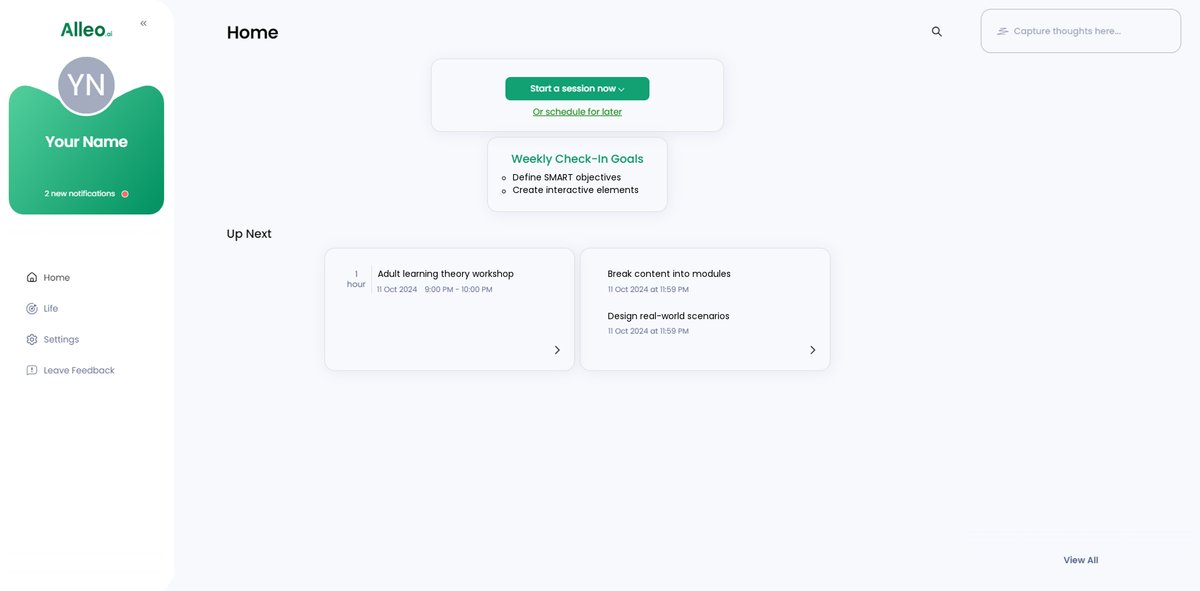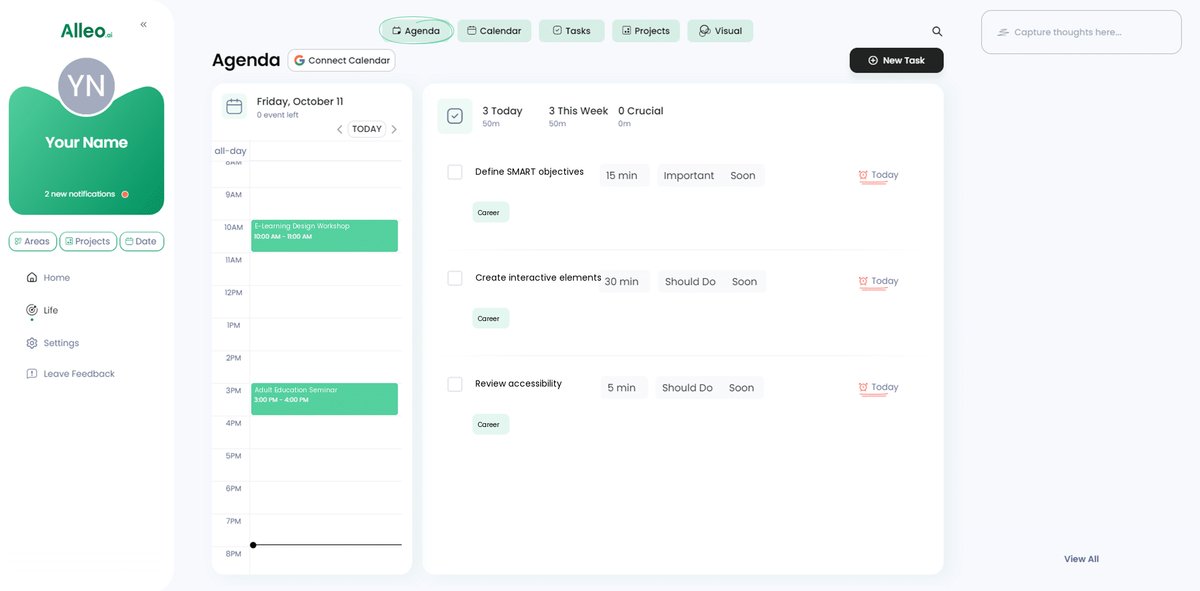How to Design Engaging E-Learning Courses That Adult Professionals Love
Have you ever wondered why designing engaging e-learning for adults, especially for adult professionals, is so challenging?
As a life coach, I’ve observed many educators struggle to create instructional experiences that are both effective and appealing for adult learners, often overlooking key adult learning principles.
In this blog, we will explore actionable steps to design engaging e-learning for adults in professional settings, covering strategies like:
- Applying adult learning theories
- Creating clear objectives
- Incorporating interactive e-learning elements
- Designing for accessibility
- Using emotional engagement
Let’s dive into these corporate training best practices.

Understanding the Challenge of Engaging Adult Learners
Engaging e-learning for adults is no small feat. Many educators struggle to keep their audience captivated and motivated throughout e-learning courses, often overlooking key adult learning principles.
Consider a scenario where an instructor designs a course, only to find out that learners quickly lose interest. This can be disheartening and frustrating, highlighting the need for interactive e-learning elements.
The stakes are high. If adult learners are disengaged, they won’t retain the information, leading to ineffective training and wasted resources. This is particularly crucial in corporate training best practices.
In my experience, several clients report difficulties aligning their content with adult learners’ needs. This often results in poor course completion rates and learner dissatisfaction, emphasizing the importance of personalized learning paths.
Addressing these challenges is crucial for the success of both educators and learners. We’ll explore practical steps to tackle this issue head-on, including microlearning strategies and multimedia integration in e-learning.

Key Strategies for Designing Engaging E-Learning Courses
Overcoming this challenge requires a few key steps. Here are the main areas to focus on to make progress in creating engaging e-learning for adults.
- Apply adult learning theories to course design: Integrate principles from adult learning theories to enhance engagement and implement corporate training best practices.
- Create clear, relevant learning objectives: Develop precise, practical objectives that align with real-world applications and support personalized learning paths.
- Incorporate interactive and exploratory elements: Use quizzes, simulations, and self-directed projects to boost interactivity and implement gamification in professional development.
- Design for accessibility and mobile responsiveness: Ensure content is accessible and compatible across various devices with mobile-friendly e-learning design.
- Implement spaced repetition and microlearning: Break content into smaller modules and use spaced repetition for better retention, applying microlearning strategies.
- Use emotional engagement and real-world scenarios: Include stories, case studies, and simulations relevant to learners’ interests, incorporating scenario-based learning for adults.
Let’s dive into these strategies for engaging e-learning for adults!
1: Apply adult learning theories to course design
Incorporating adult learning theories into your course design is essential for creating engaging e-learning for adults and motivating adult learners.
Actionable Steps:
- Research and integrate Malcolm Knowles’s Andragogy principles into your course design, focusing on adult learning principles.
- Attend a workshop on adult learning theories to deepen your understanding of interactive e-learning elements.
- Consult with a mentor experienced in adult education to tailor your approach to corporate training best practices.
Explanation: Understanding and applying adult learning theories, such as Malcolm Knowles’s Andragogy, can significantly enhance learner engagement and retention in engaging e-learning for adults. These theories help educators design courses that cater to adult learners’ specific needs and preferences, including personalized learning paths.
To delve deeper into these concepts, consider attending a workshop or consulting with a seasoned mentor. For further insights, check out this comprehensive guide on applying adult learning theories to eLearning.
Key principles of Andragogy to consider for engaging e-learning for adults:
- Self-directed learning
- Experiential learning
- Problem-centered approach
- Immediate relevance
By implementing these steps, you can create a learning experience that resonates with adult professionals, making your courses more effective and engaging through multimedia integration in e-learning and scenario-based learning for adults.

2: Create clear, relevant learning objectives
Creating clear, relevant learning objectives is crucial for guiding learners and ensuring engaging e-learning for adults meets their needs.
Actionable Steps:
- Define specific, measurable, actionable, realistic, and time-bound (SMART) objectives aligned with adult learning principles.
- Align each objective with practical, real-world applications, incorporating interactive e-learning elements.
- Gather and incorporate feedback from a sample group of adult learners to refine corporate training best practices.
Explanation: Clear learning objectives provide a roadmap for both educators and learners, enhancing focus and effectiveness in engaging e-learning for adults.
By aligning objectives with real-world applications, you ensure the content is relevant and engaging, supporting personalized learning paths.
Gathering feedback helps refine and validate these goals. For more insights, explore this guide on e-learning design.
These steps will help you create structured, impactful courses that resonate with adult professionals, incorporating microlearning strategies and scenario-based learning for adults.
3: Incorporate interactive and exploratory elements
Incorporating interactive and exploratory elements is essential to keep adult learners engaged and motivated in engaging e-learning for adults.
Actionable Steps:
- Integrate quizzes, simulations, and scenario-based learning activities to boost interactivity.
- Use game-based learning and gamification strategies in professional development to enhance engagement.
- Provide opportunities for learners to explore content through self-directed projects, applying adult learning principles.
Explanation: Interactive e-learning elements make learning more engaging and memorable. They foster active participation and curiosity, which are crucial for adult learners in corporate training.
Using these techniques, you can create a dynamic learning environment that promotes better retention and practical application of knowledge, aligning with corporate training best practices.
For more insights, explore this guide on virtual learning development.
These strategies will help you create an engaging and effective e-learning experience for adult professionals, incorporating personalized learning paths and multimedia integration in e-learning.

4: Design for accessibility and mobile responsiveness
Designing for accessibility and mobile responsiveness ensures that all learners can access and engage with your content, regardless of device or ability. This approach is crucial for creating engaging e-learning for adults in today’s diverse digital landscape.
Actionable Steps:
- Ensure all multimedia elements are compatible across devices and accessible to learners with disabilities, adhering to corporate training best practices.
- Implement user-friendly design principles to enhance the learning experience, focusing on mobile-friendly e-learning design.
- Conduct usability testing with a diverse group of adult learners to identify and address accessibility issues, aligning with adult learning principles.
Explanation: Prioritizing accessibility and mobile responsiveness is key to reaching a broader audience and ensuring effective learning. By making content accessible and user-friendly, you improve the learning experience for everyone, which is essential for engaging e-learning for adults.
For more insights, check out this guide on virtual learning development. These steps will help create an inclusive and engaging e-learning environment for adult professionals.
Key accessibility considerations:
- Screen reader compatibility
- Color contrast for readability
- Alternative text for images

5: Implement spaced repetition and microlearning
Implementing spaced repetition and microlearning is crucial for enhancing knowledge retention and engagement among adult learners in engaging e-learning for adults.
Actionable Steps:
- Break down content into smaller, manageable microlearning modules, aligning with adult learning principles.
- Schedule spaced repetition sessions to reinforce learning and improve retention in corporate training best practices.
- Use AI-powered tools to personalize learning paths based on individual progress and needs.
Explanation: These steps matter because they align with how adults learn best—through concise, repeated exposure to information over time.
By breaking content into smaller chunks and spacing out repetition, you improve long-term retention significantly in engaging e-learning for adults.
Leveraging AI can further personalize the learning experience, making it more effective. For more information, check out this comprehensive guide on effective adult learning strategies.
This approach ensures adult learners can absorb and retain information more effectively in interactive e-learning elements.

6: Use emotional engagement and real-world scenarios
Using emotional engagement and real-world scenarios is vital for creating engaging e-learning for adults, connecting with their interests and experiences.
Actionable Steps:
- Incorporate emotionally engaging stories and case studies relevant to the learners’ interests, following adult learning principles.
- Design activities that simulate real-world challenges and scenarios, implementing scenario-based learning for adults.
- Foster a sense of community and collaboration among learners through discussion forums and group projects, utilizing interactive e-learning elements.
Explanation: These steps matter because they tap into adult learners’ emotional and practical needs, enhancing motivation and retention in engaging e-learning for adults.
By using real-world scenarios, learners see the relevance of their studies, making the content more impactful and aligning with corporate training best practices.
For further insights, explore this guide on what motivates adult learners.
Benefits of emotional engagement in e-learning:
- Increased motivation
- Better information retention
- Enhanced critical thinking
This approach ensures your e-learning courses resonate well with adult professionals, fostering a more engaging and effective learning experience through personalized learning paths and multimedia integration in e-learning.

Partner with Alleo to Enhance Your E-Learning Courses
We’ve explored the challenges of designing engaging e-learning for adults in professional settings. Did you know you can work directly with Alleo to make this journey easier and faster, incorporating adult learning principles and interactive e-learning elements?
Setting up an account is simple. Create a personalized learning path, and work with Alleo’s AI coach to overcome specific challenges in corporate training best practices.
The coach will follow up on your progress, handle changes, and keep you accountable via text and push notifications, supporting your microlearning strategies.
Ready to get started for free with engaging e-learning for adults? Let me show you how!
Step 1: Log In or Create Your Account
To get started with Alleo’s AI coach for designing engaging e-learning courses, simply Log in to your account or create a new one if you’re a first-time user.

Step 2: Choose “Building better habits and routines”
Select “Building better habits and routines” to develop consistent practices that will enhance your e-learning course design process, helping you create more engaging and effective content for adult learners.

Step 3: Select “Career” as Your Focus Area
Choose “Career” as your focus area to align your e-learning design skills with professional growth, enhancing your ability to create engaging courses that resonate with adult learners in their work environments.

Step 4: Starting a coaching session
Begin your journey with Alleo by scheduling an initial intake session to establish your personalized e-learning course design plan and set achievable goals for creating engaging content for adult professionals.

Step 5: Viewing and Managing Goals After the Session
After your coaching session, check the app’s home page to view and manage the goals you discussed, keeping you on track with your e-learning course design improvements.

Step 6: Adding events to your calendar or app
Easily track your progress in designing engaging e-learning courses by adding key milestones and deadlines to your calendar or app, allowing you to monitor your advancement and stay accountable throughout the course creation process.

Wrapping Up: Your Path to Engaging E-Learning Courses
We’ve covered a lot of ground on designing engaging e-learning for adults and professionals. The challenge is real, but so are the solutions.
By applying adult learning principles, you create a solid foundation. Clear objectives guide your learners effectively, adhering to corporate training best practices.
Interactive e-learning elements and accessibility boost engagement. Spaced repetition and emotional engagement further enhance the learning experience, incorporating microlearning strategies.
Small steps, big impact.
Remember, you’re not alone. Alleo can help you streamline your course design process, including personalized learning paths.
Take action today. Try Alleo for free and transform your e-learning courses for adult learners.
Your adult learners will thank you.